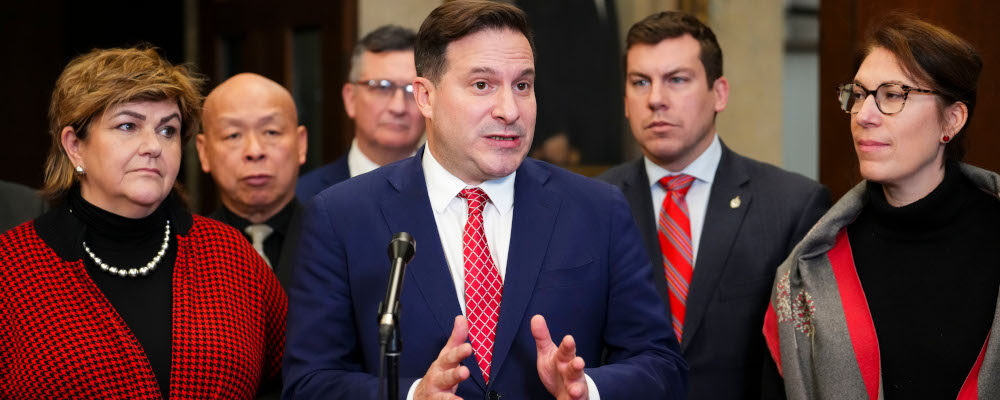I am terrified of guns.
Growing up in Toronto, I have never held any sort of firearm in my life. The mere notion of guns freaks me out, even to the point where I can admit that my fear is somewhat irrational. But of course, it is not totally unfounded. The worsening issue of gun-related violence has plagued Torontonians in frightening and even fatal ways.
Gun violence will always be present in big metropolitan cities like Toronto, but it has risen in dramatic fashion in recent years. It reached a peak in 2019, with 492 incidents and 284 persons killed or injured, according to Toronto Police Service data.
Dropping to the ground at the sound of gunshots has become a first-hand experience for far too many Torontonians, myself included.
And not just Toronto. The trend persists at the national level. According to Statistics Canada, in 2021 gun violence was the most common cause of death among homicide victims for the sixth consecutive year, accounting for 40 percent of homicides, wherein handguns are primarily used.
Hence, with the initial introduction of Bill C-21—which purportedly aims to address gun violence and place a “national freeze” on handguns—I will admit, I did feel some sense of comfort. At first blush, it seemed to me that the federal government was finally taking this issue seriously. Hopefully, something would be done, especially when it came to illegal gun smuggling and trafficking.
As details of the actual legislation became apparent, however, that feeling dissipated. In late 2022, the government introduced some last-minute amendments that expanded the scope of prohibited weapons to include semi-automatic weapons such as hunting rifles and even sporting guns.
In introducing these amendments, it was clear that the Liberal caucus was either not aware of its own biases and blindspots on the issue and the present realities that Canadians across the country face, or they just did not care and were content to, once again, play wedge politics with this file.
First, hunting rifles and semi-automatic guns are not the main causes of rising gun violence across Canada, except for a few exceptions. According to Statistics Canada, 40 percent of homicides involved shooting incidents, of which handguns are the primary use (57 percent), followed by rifles and shotguns (26 percent). Stabbings, on the other hand, accounted for 32 percent of total homicides, a much higher proportion than cases involving hunting rifles and shotguns.
Second, these amendments did not account for the differences between urban and rural realities. I live in a major urban city where I have easy access to important infrastructure and resources, including, importantly, the security of police who are close by and quickly responsive in an emergency. I also don’t live with the fear of wild animals coming to my home and causing me harm.
Travel 2,551 miles north of Toronto, though, and you’ll find Yukon hunters and gun owners who live in an entirely different reality than I do and rightly expressed this to Public Safety Minister Marco Mendocino. Concerns ranged from the need to hunt for food to survive, the lack of law enforcement services due to living in remote areas, and the utility of rifles as protection from wildlife. And while rural areas differ from one another, that is nonetheless their common reality.
And third, these amendments directly impacted Indigenous hunting and fishing rights. One major element that has been missing in this entire conversation is how this amendment contravenes Indigenous hunting rights—treaties and customs are enshrined in section 35 of the 1982 Constitution—and lived realities. About 60 percent of Indigenous peoples live in remote, rural areas, and that trend has been constant.
As such, these amendments not only negatively impacted many Indigenous communities that rely on hunting not only for cultural reasons but for basic survival and sustenance. These firearms are not just for fun. They are tools that feed entire communities. For many communities, hunting their own food is the most economically feasible option.
The new amendments would not have contributed to lowering gun violence across the country. Instead, they criminalized gun owners who live in rural or remote areas and Indigenous communities. Canadians who live outside of major cities may not matter much to the Liberal government electorally speaking, but their concerns are just as valid as the rest.
These amendments have since been withdrawn after major opposition, with the Liberal government backtracking its own rhetoric on the issue.
And yet even still, the bill in its current state misses the mark in two fundamental ways.
First, the national freeze on the sale, purchase, or transfer of handguns and acquisition of new handguns into Canada—which came into force in late 2022—does not directly reduce gun violence. This is the case since Canada already established specific gun controls through the possession and acquisition licence (PAL) process.
To receive a PAL, you have to go through a meticulous process of criminal background and medical history checks and must pass the Canadian Firearms Safety course. Additionally, the federal government already expanded background checks to include a PAL applicant’s entire life history, rather than just the last five years.
Essentially, if you have already committed a crime, have a history of violent behaviour, a history of mental illness associated with violent behaviour, a history of threatening/attempted violence, or if there is any basis that law enforcement reasonably believes that you will pose a risk to yourself or others if you own a firearm, all these factors can disqualify you from legally owning a gun in Canada.
PAL holders are also required to register their firearms and are subjected to continuous background checks and mental health screenings while holding a licence. Licences can be revoked if any crime is committed after the fact or any anomaly is found.

Why was there then a need for a “national freeze” on the sale, purchase or transfer of handguns and bringing new handguns into Canada, especially since they were legal? Even though PAL holders and authorized businesses are exempted, there is no point. Even before the national freeze, people who are not PAL holders cannot get a handgun unless through illegal means.
The Liberal government seemingly based their decision on this statistic: registered handguns in Canada increased by 71 percent between 2010 and 2020, around the same time period that gun violence increased. From this, they claim that there is a correlation. Except they missed one major point: registered guns are only owned by PAL holders who are less likely to commit acts of violence than non-PAL holders.
While there is limited data on whether firearms associated with gun violence were legally accessed or not, in a majority of cases gun violence comes from those who are not PAL holders, i.e. they acquired a firearm illegally.
Hence, rising gun violence is most likely due to the rise of illegal firearms—particularly handguns—coming into Canada and then being used by non-PAL holders or criminal organizations. Who would be a part of a process that puts you under a microscope to see whether you qualify to receive a firearm or not when wanting to commit a crime?
So while Bill C-21 does address some issues surrounding gun smuggling and trafficking and more provisions of licence revocation surrounding intimate partner violence and gender-based violence, the bill itself does not confront the main root causes of gun violence on our streets.
There is a correlation between rising gun violence and general crime and deteriorating socioeconomic conditions, such as rising poverty, lack of education and economic opportunities, lack of mental health support, and lack of support for young Canadians—especially those from racialized and marginalized communities.
This is very much the case in Toronto, where there is a correlation between rising gun violence and worsening conditions. Due to deteriorating socioeconomic conditions, people turn to the illegal business of gun smuggling and usage because it is a lucrative business. The fact that any strategy addressing root causes has not been mentioned in Bill C-21 is a major blindspot. And while the government has addressed this in their 2022 budget, the lack of intersection between these issues is concerning, to say the least.
Fear is a potent emotion. This combined with biases and uncertainty can make people blind from seeing long-term consequences when making unsubstantiated decisions. On the surface, this bill may seem to appease those of us from the GTA, but with a closer look, at its current state, Bill C-21 is in need of major revisions.
As Bill Klassen, former RCMP officer and Yukon government senior bureaucrat who is a gun owner, remarked to Minister Mendocino, “I don’t see how [Bill C-21] is going to make Canada safer.” I can’t help but agree.
Let’s hope the government does too.




